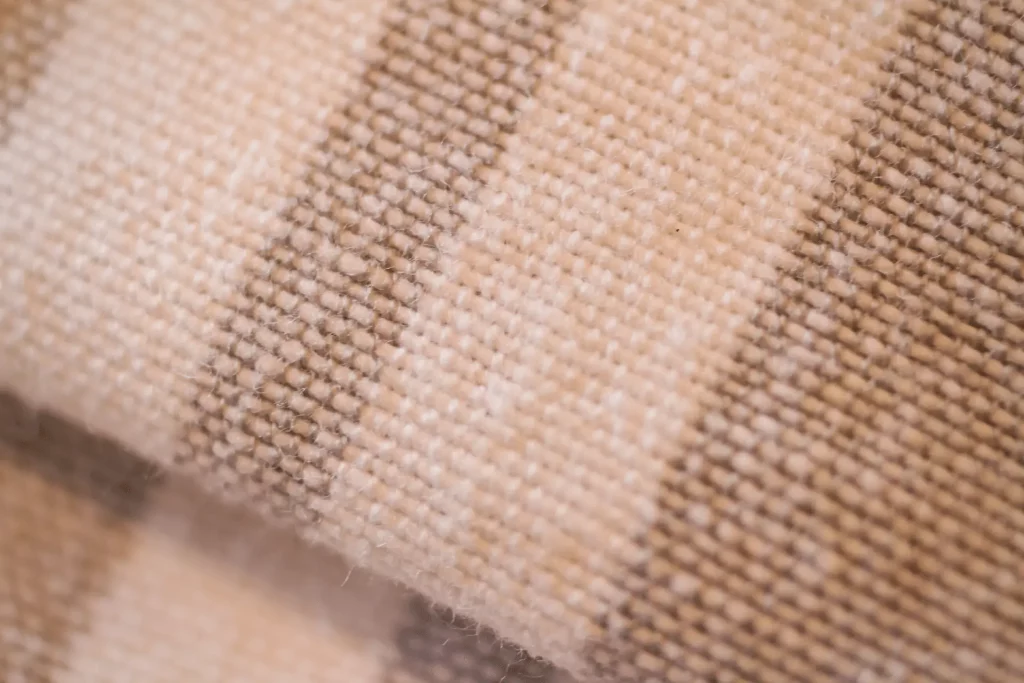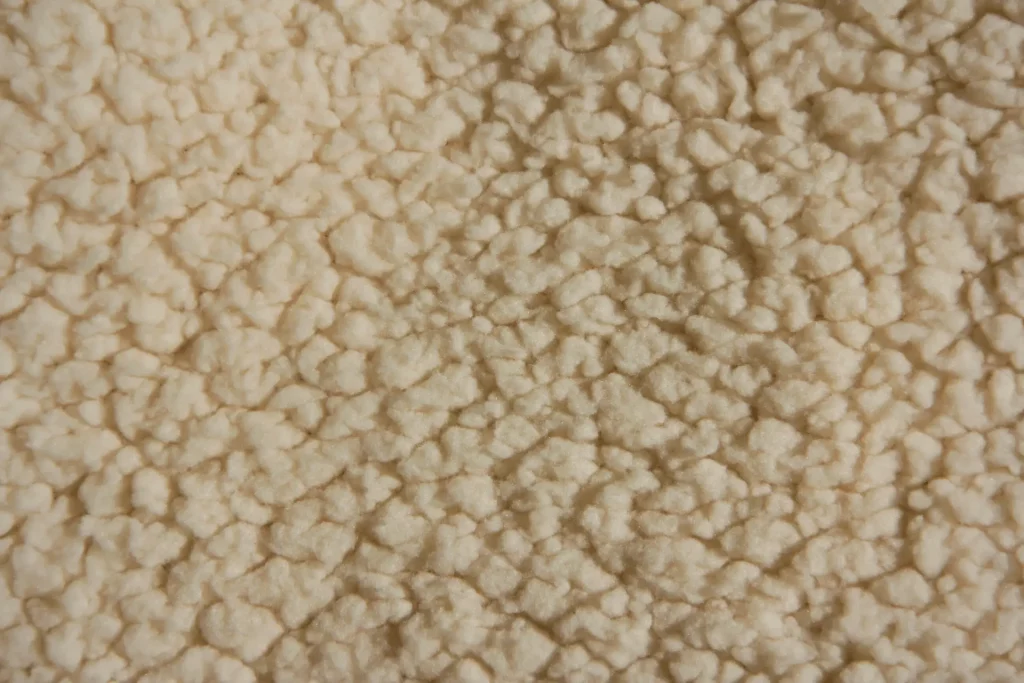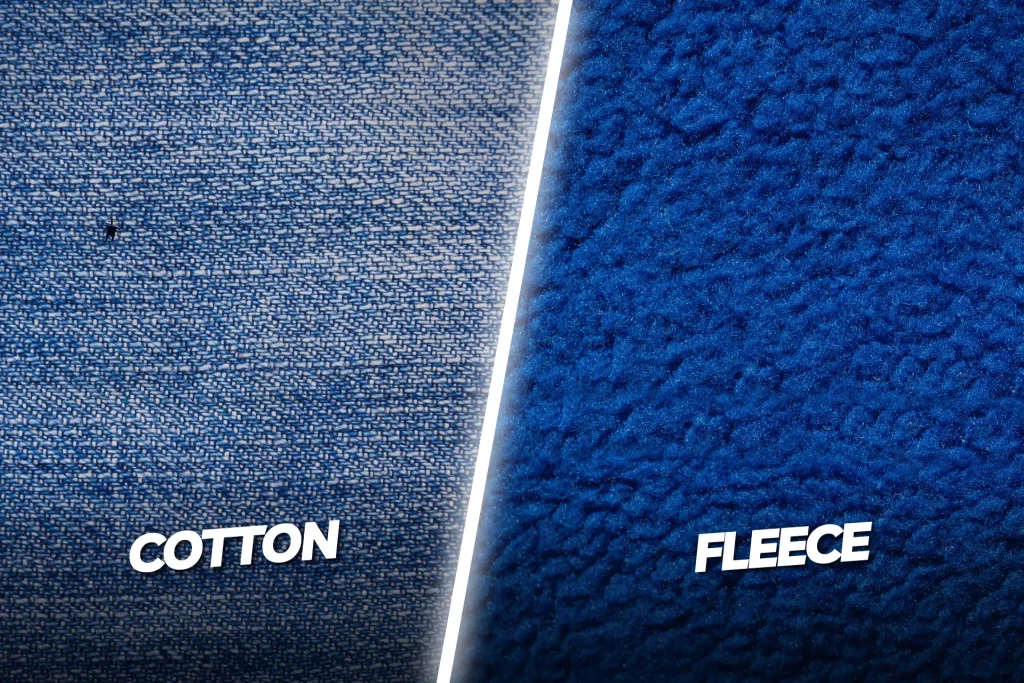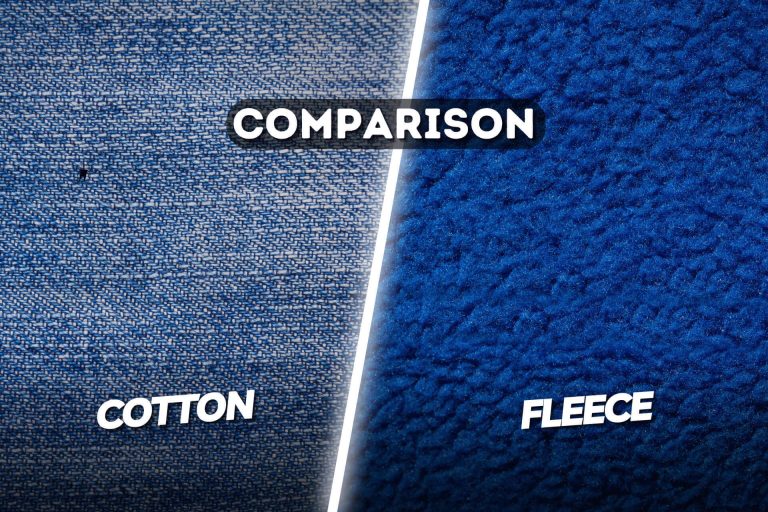If you enjoy spending time outside, you most likely know that coming prepared for any weather is essential. While selecting clothing and other products, it is imperative that you pay attention to the material that will be utilized.
Fleece and cotton are standard options, but you might be curious about which one is superior. It is essential to better understand the properties of cotton and fleece materials before deciding between the two types of textiles. This can make it possible for you to compare them to one another and then to your requirements to choose the most suitable for you.
Even if we believe fleece is the superior option, you could disagree. That is why we took the time to put together this comparison specifically for you. It will assist you in making an educated selection regarding which cloth best meet your requirements.
Table of Contents
What is Cotton?
The cotton plant has been around for a very long time. Because of the versatility of the plant’s components, it is harvested for use in the production of a wide range of goods. It can produce everything, from food to clothing to personal care goods like soap and shampoo.
According to the National Cotton Council of America, it has been used to produce garments since ancient Egyptians. It can be found in every region of the earth. Texas is the state in the United States that produces the most cotton overall.
It wasn’t until 1730 that the first spinning machine was invented, and it wasn’t until 1793 that Eli Whitney invented the cotton gin, which completely changed how cotton was used in garments and other fabric types. Cotton is used for various things, but fabric production is the most common.
Cotton is an all-natural option since it is a plant fabric. It is frequently used to produce various household products, including apparel, bedding, and blankets. In addition to its usage as a fabric, it also has various applications, such as the stuffing for pillows and medical supplies.
It serves as the foundation for a wide variety of textiles. Denim, plaid, canvas, and terry cloth are all woven textiles that may be made from cotton fibers. Of course, it can also take on a wide variety of traits.
When natural fibers are spun, they can be made rigid and stiff, yet they can still maintain their softness. Natural fibers are fluffy and soft. Cotton is frequently blended with other materials because of its adaptability and versatility.
For summer, Cotton has a range of fabrics, and Egyptian Cotton is highly rated for sheets. Check out proven ways to wash your Egyptian sheets.
Properties of Cotton:

Cotton is a natural fiber that develops on the cotton plant’s seeds and is soft and fluffy. One of the most popular natural fibers used today, it is prized for its adaptability, toughness, and comfort. Cotton has several qualities, including:
Softness: Cotton fibers are a popular choice for clothes and other textiles because they are incredibly soft and soothing on the skin.
Breathability: Cotton is very breathable, which allows air to pass through the fabric and keeps the user cool and comfortable.
Absorbency: Cotton fibers are excellent for towels and other absorbent items because they can absorb up to 27 times their weight in water.
Durability: Cotton is a sturdy, long-lasting textile that can tolerate repeated washing and use.
Hypoallergenic: Cotton is a natural substance unlikely to irritate the skin or create allergic responses.
Versatility: Cotton may be combined with different fibers to improve certain aspects, including adding elasticity or the capacity to wick away moisture.
Renewable: Cotton is a sustainable option for textiles since it is a renewable resource cultivated and collected yearly.
Easy to care for: Cotton is simple to maintain and can be machine washed and dried.
Appearance: Cotton is a popular material for many items because of its appearance, which has a natural matte feel and comes in various colors.
Fire Resistance: Cotton is safer for clothes and bedding due to its inherent flame resistance and slow ignition rate.
Pros of Cotton:
- Cotton is a kind and pleasant material, and it feels wonderful when worn next to the skin. Since it can release and absorb moisture, it is an excellent choice as a fabric for clothes, particularly in hot and humid conditions.
- Since cotton fibers are so sturdy and long-lasting, goods made from cotton tend to have a longer lifespan than those made from other materials.
- Cotton requires little maintenance and may be washed and dried in the machine.
- Cotton is versatile enough to be used in a wide variety of items, including but not limited to garments, beds, towels, and even upholstery.
- Cotton is a renewable resource that has the potential to be farmed in a way that is environmentally friendly and requires significantly less water and pesticides than other types of crops.
Cons of Cotton:
- Cotton is prone to developing creases, and maintaining the look of certain cotton materials may require iron use.
- Cotton tends to shrink when subjected to excessive heat or moisture, which can create complications when washing or drying clothing made of cotton.
- The cultivation of cotton calls for a substantial amount of water, which may provide a challenge in regions where fresh water is in short supply.
- Cotton fields are frequently doused in various herbicides and pesticides, some of which are known to be hazardous to human and environmental health.
- The cultivation of cotton can have unfavorable effects on the natural world, such as the deterioration of soil, the polluting of water, and the reduction of biodiversity.
What is Fleece?

The decade of the 1970s saw the birth of the substance known as fleece, which was developed to pass off as wool. As a result of this reason, it has a warm texture when the winter and pre-winter seasons arrive.
Because it is manufactured from recycled plastic or wool that was just generated, its texture is frequently considered environmentally beneficial. Polyester fibers are used in the initial manufacturing process of fleece.
Plastics, chemicals, and petroleum materials are used in the manufacturing process to create these fibers. Fleece is an artificial material that serves as an alternative to natural wool. It is similar to it in many ways, but it is also very different in many others.
A wide range of thicknesses and varieties of fleece are available, some soft and fluffy while others are more robust and coarse. Despite this, fleece is distinguished from similar materials by a single trait shared across the board: its sensitive nature.
The most common reason for employing fleece is its power to provide protection or retain heat and keep one toasty. Nonetheless, it has a low water absorption capacity and high durability, contributing to its popularity and adaptability as a material that can be used in various contexts.
Because of its moisture resistance, fleece is an excellent choice for use during physical activities in which it is desirable to maintain a dry environment. In addition, it has a soft texture that is not challenging to put on and will not burden the wearer in any way, nor will it feel heavy while worn.
Properties of Fleece:
Warmth: The capacity of fleece to offer warmth is another essential characteristic. The material is a superb insulator, trapping heat close to the body and keeping the user warm. To keep the body from being chilly, fleece fibers are also made to drain moisture away from the skin.
Lightweight: Fleece is exceptionally light for something that can keep you warm. Even when used for clothes like jackets or trousers, this makes it simple to wear and pleasant for extended periods. The fabric’s modest weight also makes it the perfect option for outdoor clothing, where thick fabrics may need to be fixed.
Moisture-wicking: Fleece is created to have a high moisture-wicking capacity, which allows the fabric to absorb and drain sweat away from the body. In chilly temperatures, feeling moist or sweating can be uncomfortable and cause chills, which helps avoid such effects. Fleece is a well-liked material for outdoor activities like hiking and camping because of its capacity to drain moisture away from the body.
Durable: Fleece is a sturdy material that resists tearing. It is a well-liked option for outdoor gear like coats, backpacks, and sleeping bags since it is made to be strong enough to survive repeated usage. Moreover, the fabric is resistant to pilling and fading so it will keep its beauty even after many years of usage.
Softness: One of the most distinctive properties of fleece is its softness. The fabric is made by weaving synthetic fibers into a thick, fluffy texture that feels incredibly soft against the skin. This softness is due to how the fibers are brushed during manufacturing, which helps create a plush texture.
Pros of Fleece:
- Because it is often less expensive than other materials such as wool or cashmere, many alternative individuals find fleece within their price range.
- Fleece, despite its ability to keep you warm, is not very heavy, which makes it simple to wear and convenient to carry for trips.
- Because of its reputation for coziness and ease of wear on the skin, fleece is frequently used to produce various textile goods, including apparel, blankets, and accessories.
- Since it dries rapidly and does not absorb moisture quickly, fleece is an excellent choice for outdoor activities such as hiking and camping.
- Fleece is an excellent insulator that keeps you warm even when the weather is chilly. It is frequently utilized to produce outdoor apparel and equipment for winter activities.
Cons of Fleece:
- Fleece is not a permeable fabric; thus, it has the potential to trap heat and moisture against the skin, which, depending on the circumstances, can be somewhat uncomfortable.
- Fleece is manufactured using synthetic materials, which can take a long time to degrade when thrown away in landfills. In addition, the microplastics that are shed from fleece might be hazardous to the species in the ocean.
- Fleece can get pilled with time if worn often and washed frequently.
- Because fleece is made of synthetic and highly flammable, using it in certain circumstances might threaten one’s safety.
- Fleece has the potential to produce static electricity, which, in addition to causing discomfort, can cause garments to stick to the body.
While fleece is generally less expensive than wool, each material has distinct properties. Comparing Merino wool and fleece fabric can highlight these differences.
Cotton vs. Fleece: Comparison Chart
| Parameter of Comparison | Fleece | Cotton |
|---|---|---|
| Origin | Made from plastic, chemicals, and petroleum products | Obtained from the cotton plant, a natural source |
| Fibers used | Made from synthetic polyester fibers | Made from natural cotton fibers |
| Texture and Quality | Artificial and smooth textures can be bulky or thin depending on the type | Soft and smooth textures can vary in thickness and weight depending on the type |
| Comfort and Warmth | Provides warmth as it replicates wool but may not be as breathable as cotton | Not as warm as fleece but highly breathable and comfortable |
| Breathability | Less breathable than cotton, it may trap moisture and cause sweating | Highly breathable and moisture-wicking, it keeps skin cool and dry |
| Dry time | Dries faster than cotton and can be air-dried or machine-dried on low heat. | Takes longer to dry and can be air-dried or machine-dried on low heat |
| Moisture | Repels moisture and dries quickly, but may not retain warmth when we | Absorbs moisture and retains warmth when wet, may feel damp or heavy |
| Odor Resistance | It may hold onto odors, especially when not washed regularly | Does not retain odors easily, may need fewer items of washing and less detergent |
| Durability | Resists pilling and wear, may retain shape and color over time | It can be prone to pilling and wear and may shrink or lose shape with repeated washing or drying |
| Biodegradability | Not biodegradable, may release microplastics when disposed | Biodegradable decomposes naturally without causing harm to the environment |
Differences Between Fleece and Cotton:

- Cotton is used in the production process of fleece; other materials like plastic, chemicals, or other industrial byproducts may also be used. Cotton, on the other hand, comes directly from the cotton plant itself.
- The fibers used to make fleece are made of polyester, while the fibers used to make cotton are made of cotton.
- Fleece is a warm fabric compared to cotton. Cotton is more suited for warmer weather, whereas fleece, which imitates the feel of wool, is better suited for colder weather. Cotton is well known for its soft and breathable fabric, unlike fleece, which contains coarse threads that can cause itching when they come into contact with the skin.
- Fleece has a more synthetic feel to it since it is made from polyester fibers, whereas the main selling point of cotton is its ability to be spun into a fabric that is both soft and silky.
- Cotton, on the other hand, is a highly breathable fabric; this makes it renowned for giving comfort throughout the warmer months. Nevertheless, fleece is not a breathable fabric in the same way that cotton is.
- The time it takes for cotton cloth to dry is significantly longer than the time it takes for the fleece to dry.
- Cotton is a material that holds up well over time. Because it is manufactured from synthetic materials and fibers made from polyester, fleece has a very long lifespan. It has a longer lifespan than cotton.
- Cotton, in its natural fibers made from cotton fibers, may be entirely broken down by natural processes. On the other hand, fleece takes longer to deteriorate entirely than natural fibers because it is made from synthetic fibers. Although fleece is commonly constructed from recycled plastic or newly manufactured fleece components, it is still considered an environmentally benign material.
Frequently Asked Questions:
Can You Use Cotton Fabric For A Tie Blanket?
Sure, you can make a tie blanket out of cotton cloth. Cotton is preferred for tie blankets due to its softness, comfort, and toughness. Consider the weight and quality of cotton for a tie blanket. The cloth should be tight enough to stand up as you tie the knots. To prevent shrinking after creating the blanket, be careful to prewash and dry the cloth.
Does Fleece Absorb Water?
The capacity of fleece to absorb water is relatively meager. The synthetic fleece material is polyester, making it hydrophobic and water-resistant. This makes it a popular option for outdoor apparel and blankets since it retains less moisture than natural fibers like cotton and keeps you warm even when wet.
Is Flannel Warmer Than Cotton?
Cotton strands are brushed to create a soft, fuzzy surface to create flannel, a thicker, heavier fabric that tends to be warmer than cotton. Its surface forms little air pockets that trap body heat, aiding in thermal insulation and keeping you warm.
Is Flannel Warmer Than Fleece?
Flannel is often cooler than fleece. Fleece is an excellent option for keeping warm in cold weather since it is manufactured from synthetic materials that simulate wool’s insulating characteristics. Fleece can retain heat near your body while allowing moisture to escape since it is lightweight and breathable.
Conclusion:
Fleece and cotton are two common textiles used in clothes and other goods. While fleece is a synthetic material that is warm, light, and simple to maintain, cotton is a natural fabric that is breathable, soft, and long-lasting. Each material has benefits and drawbacks depending on the intended function and the wearer’s preferences. Cotton or fleece should ultimately be chosen based on the temperature, degree of exercise, desired comfort level, and style.

